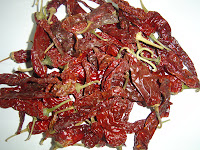 Cinnamon
CinnamonDescription
Cinnamon is the brown bark of the cinnamon tree, which when dried, rolls into a tubular form known as a quill. Cinnamon is available in either its whole quill form (cinnamon sticks) or as ground powder. The name cinnamon is derived from a Greek word meaning sweet wood.
History
Cinnamon's popularity continued throughout history. It became one of the most relied upon spices in Medieval Europe. Due to its demand, cinnamon became one of the first commodities traded regularly between the Near East and Europe. Ceylon cinnamon is produced in Sri Lanka, India, Madagascar, Brazil and the Caribbean, while cassia is mainly produced in China, Vietnam and Indonesia.
.
Basic Info
Season: Available year-round
The inner bark of a tropical evergreen tree, harvested during the rainy season when piable and then dried into curls sold as sticks or ground into a powder. With its warm, sweet flavor, cinnamon is one of the biggest workhorses on the spice shelf. Cooks often use it to flavor baked goods and drinks, but cinnamon also works wonders in stews and sauces. The best cinnamon is Ceylon cinnamon = canella = Sri Lanka cinnamon = true cinnamon. Indonesian cinnamon has a similar taste, but larger quills. Much of the cinnamon sold in the United States is cassia cinnamon, which isn't as well regarded.
Nutrition Profile
Cinnamon is an excellent source of manganese and a very good source of dietary fiber, calcium and iron.
Health Benefits (Articles & Points)
1. In addition to its unique essential oils, cinnamon is an excellent source of the trace mineral manganese and a very good source of dietary fiber, iron and calcium. The combination of calcium and fiber in cinnamon is important and can be helpful for the prevention of several different conditions. Both calcium and fiber can bind to bile salts and help remove them from the body. By removing bile, fiber helps to prevent the damage that certain bile salts can cause to colon cells, thereby reducing the risk of colon cancer. In addition, when bile is removed by fiber, the body must break down cholesterol in order to make new bile. This process can help to lower high cholesterol levels, which can be helpful in preventing atherosclerosis and heart disease. For sufferers of irritable bowel syndrome, the fiber in cinnamon may also provide relief from constipation or diarrhea. 2. In addition to the active components in its essential oils and its nutrient composition, cinnamon has also been valued in energy-based medical systems, such as Traditional Chinese Medicine, for its warming qualities. In these traditions, cinnamon has been used to provide relief when faced with the onset of a cold or flu, especially when mixed in a tea with some fresh ginger.
3. Not only does consuming cinnamon improve the body's ability to utilize blood sugar, but just smelling the wonderful odor of this sweet spice boosts brain activity!
Research led by Dr. P. Zoladz and presented April 24, 2004, at the annual meeting of the Association for Chemoreception Sciences, in Sarasota, FL, found that chewing cinnamon flavored gum or just smelling cinnamon enhanced study participants' cognitive processing. Specifically, cinnamon improved participants' scores on tasks related to attention processes, virtual recognition memory, working memory, and visual-motor speed while working on a computer-based program. Participants were exposed to four odorant conditions: no odor, peppermint odor, jasmine, and cinnamon, with cinnamon emerging the clear winner in producing positive effects on brain function. Encouraged by the results of these studies, researchers will be evaluating cinnamon’s potential for enhancing cognition in the elderly, individuals with test-anxiety, and possibly even patients with diseases that lead to cognitive decline.
4. Cinnamon is used for treating rheumatism (it is a generalized term for conditions that cause aches) and other inflammations.
5. Cinnamon has antibacterial and antifungal properties. It's active against Candida albicans, the fungus that causes yeast infections and thrush, and Helicobacter pylori, the bacteria responsible for stomach ulcers.
6. Cinnamon is also useful as a food preservative to inhibit the growth of common food-borne bacteria such as Salmonella and E coli.
7. Cinnamon extracts can also inhibit the growth of cultured tumor cells. This effect may be due to the presence of procyanidins and eugenol in the bark extract.
Uses
Flavoring for soft drinks, teas, baked product (pastries, pies, and donuts), oatmeal, toast, coffee, hot chocolate, etc. It is also used as ingredients in medicine formulas to improve the taste and aroma of the medicine. Cinnamon is also use in making perfume.
References used to make this report





